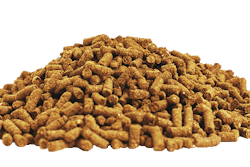
I recall a high-level conference where I was invited to present my view for the future of a premix/additives company. I had long wanted to change their mentality of marketing and prepared a presentation asking for a stop to marketing animal nutrition products as commodities. Instead, I urged them to consider the idea of marketing animal nutrition solutions. It was too early and too much for that company, which was ingrained into selling products as commodities and not as value-added solutions. They have been sold and bought since then many times, and eventually the brand has disappeared. But, others have been more proactive.
What is the difference between nutrition solutions and products?
Let us consider a complete feed for a layer. If you try to market it as a commodity, you automatically enter the price/cost competition arena, and despite all claims to the contrary, quality will have to suffer one way or the other. It is a rush to the bottom for all parties involved, and this has happened with vitamin and trace mineral premixes. With the advent of cheap sources for these valuable nutrients, quality became a second (or last) thought for everyone only to discover (at a considerable cost) that everything that shines is not necessarily gold. Today, we are again discovering the difference of quality premixes.
We need to define a solution as it differs from a product.
We need to define a solution as it differs from a product. A solution exists only in pair with a problem. That layer feed above was first designed to cover the nutrient needs of the layer, but at the least possible cost. We have seen that trying to market such product based on these levels brings about no benefit to all. The other way around would be to define what problems plague this poor layer hen. Is it not eating enough? Perhaps egg quality is not satisfactory, or leg problems cause high morbidity? There is always a major problem on every farm. Always. Finding this problem is not as easy as it may sound because it is always hidden behind the mask of reduced profitability, hence the requirement for cheaper feed/nutrition; after all nutrition is 60 to 70 percent of total production cost.
How to identify the target problem
It takes a very well-educated person to discuss the issue with the person in charge of the animals, and not necessarily the person in charge of buying nutrition products. Those who have a daily view of production, either through direct supervision of animals or through record keeping, know what is stopping animals from achieving their best. So, the field technical/sales team needs to identify these problems/needs and transfer them back to the nutrition/marketing team of the nutrition company.
Next comes the issue of putting a money value to this problem. Again, here we need a knowledgeable technical person who can run some algebra and come up with a number. This potential increase in profitability — for the end customer — needs then to be compared with the cost/price of the solution, and, of course, always assuming the nutrition company can assign a healthy margin for their effort.
So what really is a solution?
A solution is a product or a group of products that address a specific problem. Once you have convinced the end customer that this specific problem has a solution and by solving it you can bring about so much in terms of real savings, then selling the product is a no-brainer. And, this is without competition — but how is this possible?
Each solution is unique as it involves a mix of different products/technologies and is accompanied by a strong portfolio of research and field data that demonstrates the point with clarity. It is then a matter of offering a small quantity of feed/product (usually free of charge) to run a farm test and get a first glimpse of its effectiveness.
Smart solutions bypass competition
When competitors sell yeast, you can sell a yeast-based mixture (with other additives) that helps the animal overcome the total burden of mycotoxin contamination. That would be hard to copy, and by copying you, your competition declares openly that you are the best in the market. Plus, during the time it takes the competition to decipher your product and come up with their own solution, your own team will be working to launch their next solution, leaving competition behind. It’s an arms race, alright, and the best get there first and reap the benefits, leaving the rest fighting for crumbs.
But it takes a strong team. Sales and technical people need to work together with the marketing team to decide the different steps, from problem identification down to product design and sales pitch presentation.
It also takes a quick team, headed by a strong leader who can make quick decisions without fear of being wrong (at least once in a while — not all the time!). Timing and speed are essential. Problems surface and might disappear as seasons change. A sow summer booster pack can only be sold during the summer/heat months, but it needs to be ready well ahead — starting on June 1, is absolutely impossible. Also, disease is something that overshadows nutrition in that farms with dying animals cannot think of how to improve animal performance through nutrition solutions — but having a nutritional supplement for major diseases in your own portfolio could be a smart move.
The first steps towards changing marketing mentality
In my experience, nutrition companies that are long into selling commodities are hard to change. Start-ups are easier to adopt a solution-driven mentality, but they lack the resources and market network to make an impact. So, we get back to the major players that have the resources to bring about a significant change. First we need to identify and separate/hire a team away from the commodity products. Asking the same people to use two different marketing principles on different customers is not the way to do it. Let commodity people work with prices as usual but assign fresh people into the fresh approach — the rest will be easier.















